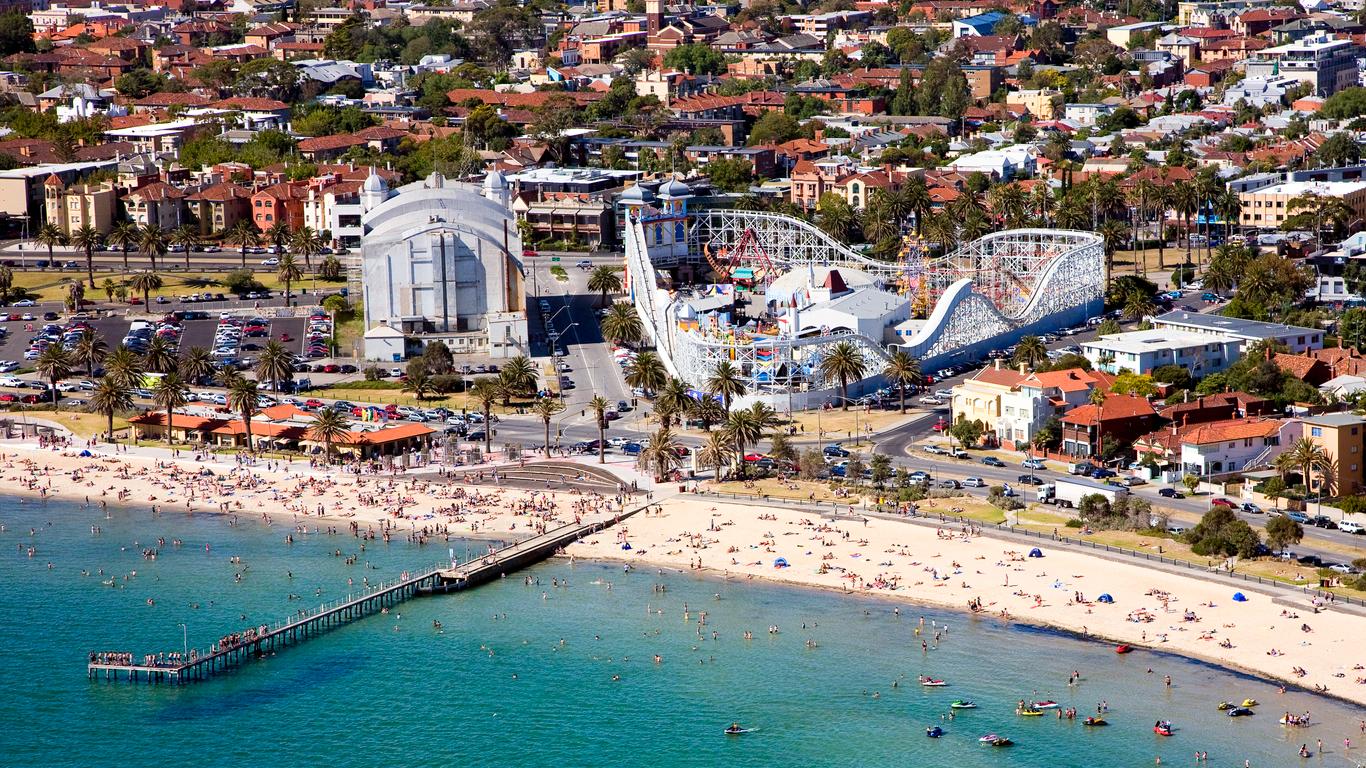St. Kilda is a coastal suburb of the cosmopolitan city of Melbourne, Australia. Located just 6 kilometres southeast of the Central Business District, St. Kilda has beautiful sandy beaches, Victorian mansions, piers and theme parks and showcase some of Melbourne’s biggest festivals and events.
St. Kilda Pier is a good place to begin an exploration of this suburb, as it provides panoramic views of the Melbourne skyline and the bay of Port Phillip. It’s the place where locals come to cycle, walk, fish, and rollerblade. From here,visitors can catch a ferry to nearby Williamstown, watch penguins from the breakwater, or simply relax with a drink in the pier café and watch the sunset over the bay. St. Kilda Botanical Gardens offer a peaceful retreat in an otherwise bustling city. This sub-tropical oasis displays species which are indigenous to Australia and this region. During the hot summer months, take refuge under one of the shady trees and admire the ornate rose gardens while enjoying a picnic. Food connoisseurs should head straight for Acland Street, and indulge in the world-famous patisseries, wine bars, quirky shops and sculptures just a short walk from the beach. For family fun, Luna Park ticks all the boxes. Historic carousel rides, a carnival atmosphere and the famous Scenic Railway Roller Coaster, makes it an enjoyable, fun day out for all. Those seeking entertainment should venture to Fitzroy Street for fantastic bands, International cuisine and a myriad of bars and theatres, a perfect place to end a fabulous day in St. Kilda.
Getting to and from St. Kilda is easy from Melbourne City Centre. Trams operate to the coast from all over the city, daily and frequently. Public bus routes also run from most of the suburbs to St. Kilda and nightrider buses operate throughout the early hours seven days a week so visitors can enjoy the entertainment on Fitzroy Street until dawn.
St. Kilda was named after the schooner “Lady of St. Kilda” which was owned by Sir Thomas Acland. When Sir Thomas sold his boat, the new captain moored the vessel on what is now St. Kilda Beach, and remained there for so long that the area became known as the “St. Kilda foreshore” after the schooner. During the mid-1800s, railway lines were built and more visitors arrived from Melbourne with the area growing rapidly, visitors keen to enjoy the fresh sea breeze. The promenade was constructed and sea baths, bowling clubs, and hotels were built. Today, St. Kilda is still a popular seaside suburb with visitors keen to enjoy all of the current recreational activities on offer.





